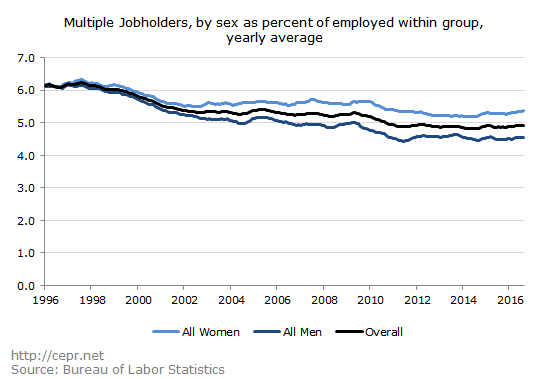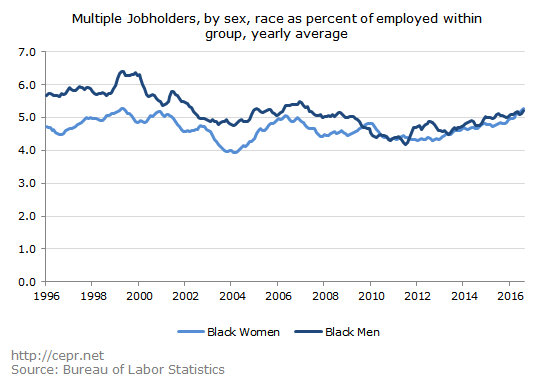September 22, 2016
Analyzing the percentage of the labor force holding multiple jobs is a key to understanding the labor market. While very recent data is not available on the reasons for holding multiple jobs, the Bureau of Labor Statistics’ (BLS) occasional surveys from the 1990s and early 2000s consistently identified financial reasons as the main cause for holding multiple jobs.
Data released by the BLS show that the overall percentage of workers with multiple jobs has been on a downward path. In 1996, over six percent of the labor force was working multiple jobs. By 2015, this number decreased to 4.9 percent of the labor force.
A higher percentage of employed women held multiple jobs over the last decade and continue to do so. In 1996, 6.2 percent of employed women were multiple jobholders, compared to 6.1 percent of employed men. This gap between women and men widened, and by 2015, 5.3 percent of employed women had more than one job, while only 4.5 percent of employed men held multiple jobs.

However, there is one group that stands out. The percentage of multiple jobholders has increased over the past decade especially among employed black women. On average, in 1996, 4.6 percent of employed black women held multiple jobs, while in 2015 that number had gone up to 4.9 percent. Overall for both black women and men, there has been a slight decrease in the percentage of labor force participants with multiple jobs, from 5.2 percentin 1996, to 5.0 percent in 2015.

Another interesting observation within this group is that more men than women in the labor force held multiple jobs. However, the gap is closing since the percentage of multiple jobholders has been increasing amongst employed women and decreasing amongst men.






